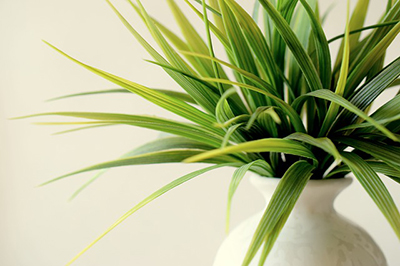Tending an indoor garden
Burpee Edible Gardening Team Members
If the winter weather won’t let you do much gardening outside this month, why not try an indoor garden. From houseplants to kitchen herbs, growing inside can bring you plenty of joy.

There are several indoor options to try. Foliage plants like Aloe, English Ivy, Dracaena or Croton. Or one of those seasonal flowers, like Amaryllis, Poinsettia or Christmas Cactus. Whichever you choose, it’s important to keep a watchful eye on houseplants this month:
• Low light and humidity can make surviving difficult for some houseplants. Move plants that seem to be suffering from lower light near the brightest windows this month, while avoiding locations too close to cold drafts and heat vents or radiators.
• Water plants thoroughly and then allow them to begin to dry at the surface before watering again. This might be a little more often than usual as plants dry out during the peak heating season.
• Low humidity can be managed by grouping plants together, placing shallow trays of water around plants that can evaporate, and making sure to mist or shower plants often that grow best in higher levels of humidity (ferns, ivies, etc.)
• Carefully washing the dust off leaves with water will also help plants survive the winter months indoors.
• Fertilizer is usually not needed on houseplants this time of year.
• Watch closely for insect pests this time of year – aphids, spider mites, scale and mealybugs can all appear on houseplants and need regular maintenance to keep their numbers in check. Refer to tips online or at the local garden center as to how to take care of these pests.

Want to grow edibles inside? Plant some parsley, rosemary or sage seed in a small pot near a sunny window or under lights. These are slow-growing herbs but once they start to germinate they can grow indoors until you are ready to put them outside when the frost is gone. Basil is a good option, too, but try to give it a south-facing window for maximum light and warmth. Clip their fragrant, tasty leaves as often as you need them in your recipes, and watch them continue to grow through the winter.

Then again, if you just want to enjoy your outdoor space from the comfort of the warm indoors, keep the bird and squirrel feeders full and observe as they enjoy your garden in the winter. From your view inside, review your winter plants in the landscape – are there enough evergreens, grasses and other plants that provide winter color and texture in the garden? Some plants like hydrangea and coneflower have interesting seed heads that collect snow in the winter. Woody plants and perennials may have colorful stems or some trees have interesting bark patterns – peeling, striped, smooth, rough. If not, be sure to make notes for adding winter interest plants to your garden in the spring.
And don’t forget to spend some time this winter thumbing through your Burpee mail order catalog to prep for spring! Our 2017 edition is available now. Sign up for your copy today.